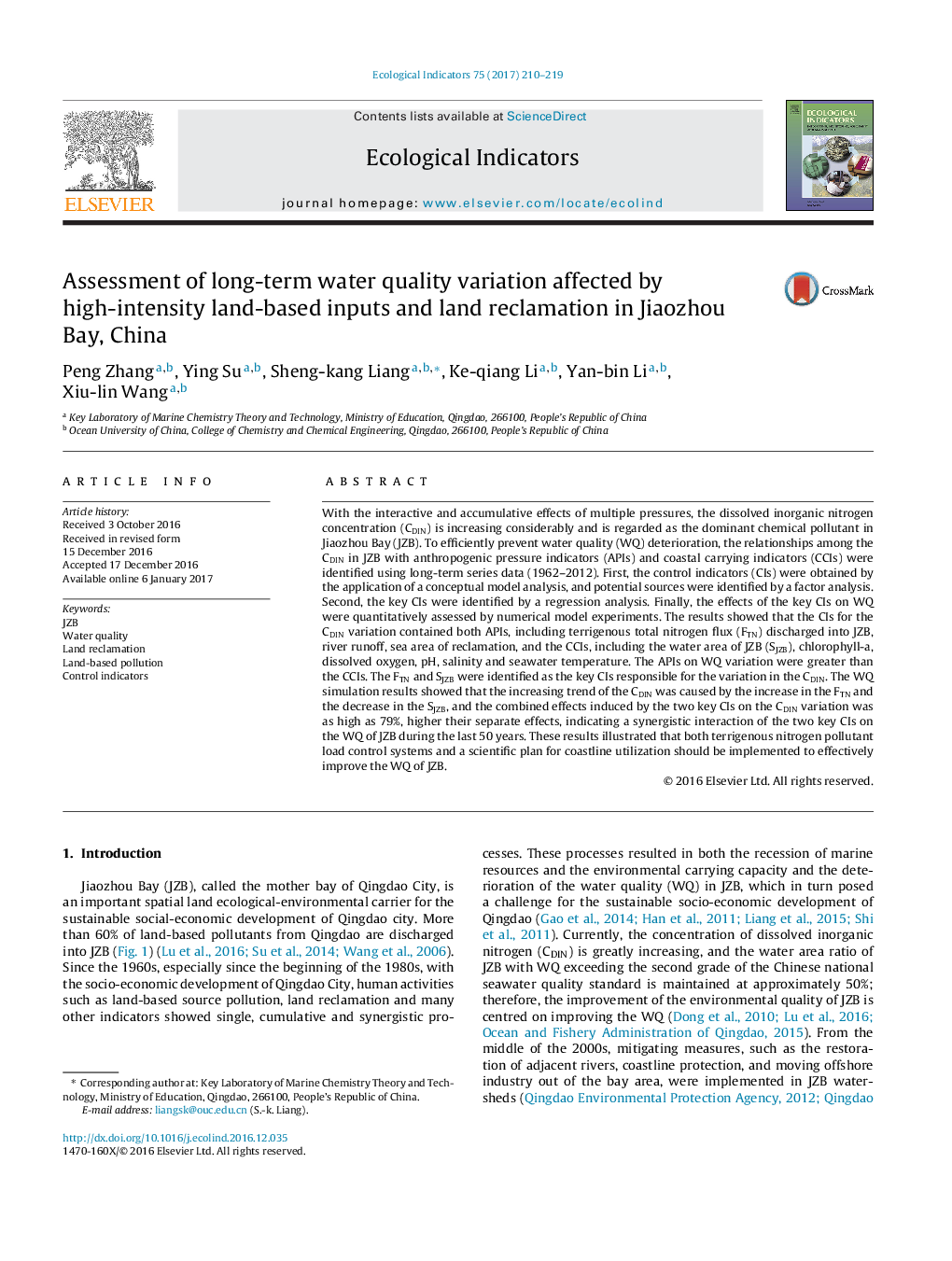| Article ID | Journal | Published Year | Pages | File Type |
|---|---|---|---|---|
| 5741812 | Ecological Indicators | 2017 | 10 Pages |
â¢Long-term variations of water quality (WQ) of Jiaozhou Bay (JZB) were analyzed.â¢Key control indicators (KCIs) of WQ of JZB were identified by multiple approaches.â¢Land-based pollution inputs and land reclamation were the two KCIs of WQ of JZB.â¢Land-based pollution inputs and land reclamation have a joint effect on WQ of JZB.
With the interactive and accumulative effects of multiple pressures, the dissolved inorganic nitrogen concentration (CDIN) is increasing considerably and is regarded as the dominant chemical pollutant in Jiaozhou Bay (JZB). To efficiently prevent water quality (WQ) deterioration, the relationships among the CDIN in JZB with anthropogenic pressure indicators (APIs) and coastal carrying indicators (CCIs) were identified using long-term series data (1962-2012). First, the control indicators (CIs) were obtained by the application of a conceptual model analysis, and potential sources were identified by a factor analysis. Second, the key CIs were identified by a regression analysis. Finally, the effects of the key CIs on WQ were quantitatively assessed by numerical model experiments. The results showed that the CIs for the CDIN variation contained both APIs, including terrigenous total nitrogen flux (FTN) discharged into JZB, river runoff, sea area of reclamation, and the CCIs, including the water area of JZB (SJZB), chlorophyll-a, dissolved oxygen, pH, salinity and seawater temperature. The APIs on WQ variation were greater than the CCIs. The FTN and SJZB were identified as the key CIs responsible for the variation in the CDIN. The WQ simulation results showed that the increasing trend of the CDIN was caused by the increase in the FTN and the decrease in the SJZB, and the combined effects induced by the two key CIs on the CDIN variation was as high as 79%, higher their separate effects, indicating a synergistic interaction of the two key CIs on the WQ of JZB during the last 50 years. These results illustrated that both terrigenous nitrogen pollutant load control systems and a scientific plan for coastline utilization should be implemented to effectively improve the WQ of JZB.
Graphical abstractDuring the past 50 years, the high-intensity land-based pollutant discharge and land reclamation have been identified as the key control indicators and have a joint contribution on the significant variation of water quality of Jiaozhou Bay, showing synergistic effect on water quality.Note: The CDIN represents dissolved inorganic nitrogen concentration; SJZB is the water area of Jiaozhou Bay (JZB); FTN is the terrestrial total nitrogen flux.Download high-res image (297KB)Download full-size image
